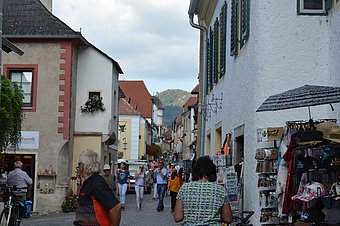Dürnstein is increasingly perceived as a backdrop for tourism and less as a place worth living and working in. Most of the small number of food outlets and souvenir shops are not run or used by locals, but instead serve as cash cows for people from outside the area. At the same time, the municipality, which is already very small and continuing to shrink in size (there are currently approximately 875 registered residents, including Oberloiben and Unterloiben), is confronted with additional expenditures that cannot be covered either by the financial settlement or by the power to raise special taxes.
However, in order to be able to hold further discussions to improve the situation with the other players involved – the tourism industry as well as politicians at provincial and federal level – a reliable and recognised database will be needed that combines the extent of visitor numbers in Dürnstein with the (subjective) sense of alienation and insecurity. For this reason, a study is being developed.
The following measures will be dealt with:
- A count of the people and traffic actually present in the town during the day in the period from July 15 to October 15, 2018. People and means of transport will be recorded entering and leaving the town, including the time of day. The number of cars and buses that park in the town will be counted.
- An ongoing survey of locals and visitors on their satisfaction with the number of people in the town (subjective perception).
- Literature and Internet research on similar Cultural and World Heritage Sites with regard to how they deal with over-use and which methods are applied.
Discussed in the project selection committee: 04.04.2018
Project promoter: Arbeitskreis Wachau Dunkelsteinerwald Regionalentwicklungs GmbH
Funding level: 80%
Project duration: 15.06.2018 – 28.02.2019
Supported by the federal province and the European Union (LEADER).


